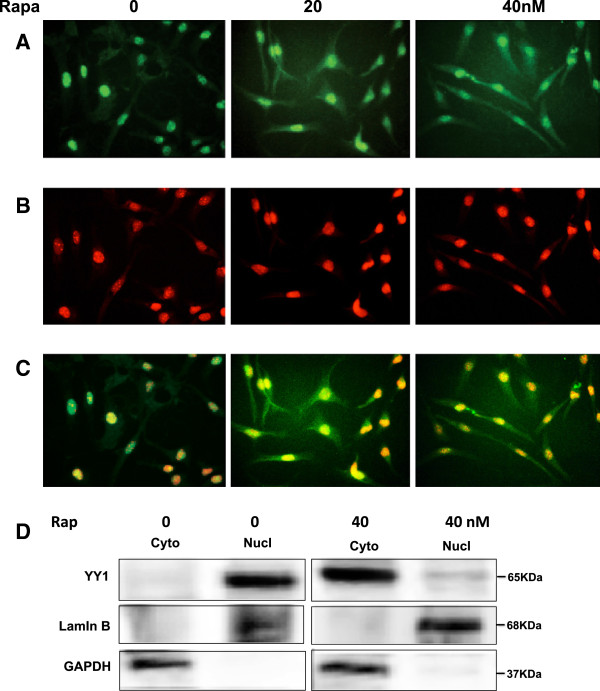Figure 1.
Rapamycin decreases of αSMA in AML cells. AML cells were treated with different concentrations of rapamycin (0-40 nM) for 24 h. Western blot analysis was performed in cell lysates using αSMA antibody. (A) Cells treated with 40 nM of rapamycin showed significant decrease in protein expression of αSMA. Inhibition of mTOR decreases mRNA of αSMA in AML cells. RNA from untreated and rapamycin treated AML cells were extracted and subjected to RT-PCR analysis. (B) mRNA of αSMA products were separated on agarose gel electrophoresis and visualized by ethidium bromide staining under UV light. (A) Cells treated with 40 nM of rapamycin showed also significant decrease in mRNA of αSMA. GAPDH was used as a loading control. Significant difference from untreated cells is indicated by **P < 0.01 and *P < 0.05. Rapamycin significantly decreased YY1 protein expression and αSMA promoter transcriptional activity in AML cells. AML cells were treated with different concentrations of rapamycin (0-40 nM) for 24 h. (C) Protein from untreated and rapamycin treated AML cells were extracted and subjected to Western blot analysis. Treated AML cells with rapamycin (0-40 nM) for 24 results in significant decreased in YY1 protein expression (D) A reporter plasmid containing the αSMA promoter driving expression of the luciferase and a control Renilla reporter gene were co-transfected into the cells using LipofectAMINE Plus ReagentTM. After treatment with different concentrations of rapamycin for 24 h. Luciferase activity was determined using the Luciferase Reporter Assay System by a luminometer and normalized by Renilla reporter activity. Histograms represent means ± SE (n = 6). Significant difference from cells treated with rapamycin is indicated by *P < 0.01.

